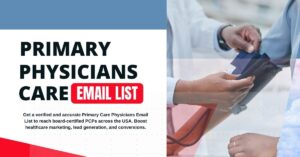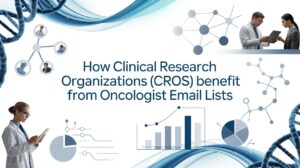The medical technology (MedTech) industry is evolving at lightning speed, driven by innovation, regulation, and the growing demand for better patient outcomes. As groundbreaking products enter the market, from wearable health trackers to AI-powered diagnostic tools, one challenge stands out for every MedTech company: how to effectively market these technologies in the digital age.
In today’s competitive landscape, success depends not only on having cutting-edge solutions but also on reaching the right audiences with the right message at the right time. This guide explores how MedTech marketers can thrive in the digital era – navigating regulations, building trust, and leveraging modern marketing strategies to drive growth.
Understanding the MedTech Landscape
Medical technology (MedTech) encompasses a wide range of products and services, including diagnostic equipment, wearable health devices, surgical instruments, digital health platforms, and software as a medical device (Software as a Medical Device or SaMD). The industry is highly competitive and tightly regulated, especially in the U.S., where oversight by the U.S. Food and Drug Administration (FDA) plays a critical role.
For marketers, this means balancing two priorities: educating the market about complex, innovative products while staying fully compliant with healthcare regulations. Unlike consumer tech, MedTech purchases often involve multiple decision-makers – clinicians, procurement teams, hospital administrators, and even insurers. This creates a longer sales cycle and demands more sophisticated, multi-channel marketing.
Core Challenges in MedTech Marketing
Before exploring strategies, it’s important to recognize the common challenges MedTech marketers face:
-
Regulatory Compliance: Marketing claims must align with FDA-approved indications and avoid misleading statements.
-
Complex Buyer Journeys: Purchases involve technical validation, clinical data reviews, and budget approvals.
-
Limited Brand Awareness: Many MedTech companies are startups or niche innovators, making it harder to build trust quickly.
-
Data Privacy Concerns: Handling health-related data requires strict adherence to Health Insurance Portability and Accountability Act (HIPAA) and other privacy regulations.
Overcoming these hurdles requires a digital-first strategy that is both compliant and customer-centric.
Key Digital Strategies for MedTech Marketing
1. Build a Strong Digital Presence
Your website is often the first touchpoint for potential customers, investors, and partners. A modern MedTech site should be:
-
User-friendly and mobile-optimized
-
Rich with product information, case studies, and clinical data
-
Clear on regulatory approvals or FDA clearance/approval status
-
Equipped with SEO-focused content to drive organic search traffic
Also, establish branded profiles on LinkedIn and X (formerly Twitter), where healthcare professionals often engage with industry news.
2. Content Marketing & Thought Leadership
Healthcare buyers trust brands that demonstrate expertise. Publish educational content that simplifies complex technology and shows its value. Ideas include:
-
Blog articles on industry trends or clinical use cases
-
Whitepapers and eBooks with research data
-
Webinars featuring medical experts
-
Video demos and explainer animations
Well-crafted content can position your company as an authority while supporting your SEO efforts.
3. Leverage Account-Based Marketing (ABM)
MedTech purchasing decisions are typically made by committees, not individuals. ABM focuses your marketing on high-value target accounts—such as large hospital networks or integrated health systems.
Use targeted ads, personalized email campaigns, and custom content tailored to the needs and challenges of each account. This focused approach shortens sales cycles and improves ROI compared to broad outreach.
4. Embrace Marketing Automation and CRM
Implementing marketing automation platforms and a robust Customer Relationship Management (CRM) system allows you to:
-
Nurture leads with personalized drip campaigns
-
Track engagement and behavior
-
Align marketing and sales teams with shared data
-
Maintain HIPAA-compliant communications when handling PHI
This data-driven approach ensures no lead gets lost and that your messaging evolves with buyer interests.
5. Utilize Paid Digital Advertising
Paid channels like Google Ads, LinkedIn Ads, and programmatic display networks can accelerate brand visibility. Use precise targeting filters to reach clinicians, healthcare executives, and procurement officers.
Always verify that your ad copy complies with FDA marketing guidelines and includes accurate labeling and risk disclosures when required.
6. Highlight Compliance and Security
Trust is paramount in healthcare. Be proactive in communicating your adherence to regulatory standards (FDA, U.S. Food and Drug Administration) and privacy laws (HIPAA, General Data Protection Regulation if relevant).
Showcase certifications, data protection measures, and clinical validation on your website and sales materials to reassure cautious buyers.
Measuring and Optimizing Performance
Successful digital marketing doesn’t stop at launch—it requires continuous improvement. Track key metrics such as:
-
Website traffic and conversion rates
-
Cost per lead (CPL) and customer acquisition cost (CAC)
-
Engagement on social and email campaigns
-
Sales cycle length and win rates
Use analytics tools to identify what’s working and refine underperforming tactics. Regularly gather feedback from your sales teams and customers to keep your messaging aligned with market needs.
Future Trends in MedTech Marketing
The digital era continues to evolve. Emerging trends shaping MedTech marketing include:
-
AI-Powered Personalization: Tailoring content and recommendations based on user behavior.
-
Virtual Reality (VR) and Augmented Reality (AR): Creating immersive product demos for surgeons and clinicians.
-
Influencer Marketing: Partnering with respected healthcare professionals to build credibility.
-
Value-Based Messaging: Shifting from product features to real-world outcomes and ROI for healthcare systems.
Early adoption of these trends can give MedTech brands a competitive edge.
Final Thoughts
MedTech marketing in the digital era demands a unique mix of creativity, compliance, and data-driven strategy. By building a strong online presence, educating your audience, embracing automation, and prioritizing trust, your brand can stand out in a crowded marketplace.
As the industry grows more competitive and patient outcomes take center stage, MedTech companies that master digital marketing will be best positioned to drive adoption, secure funding, and ultimately improve lives.
Visit our website Med Stream Data for more healthcare industry related information!







